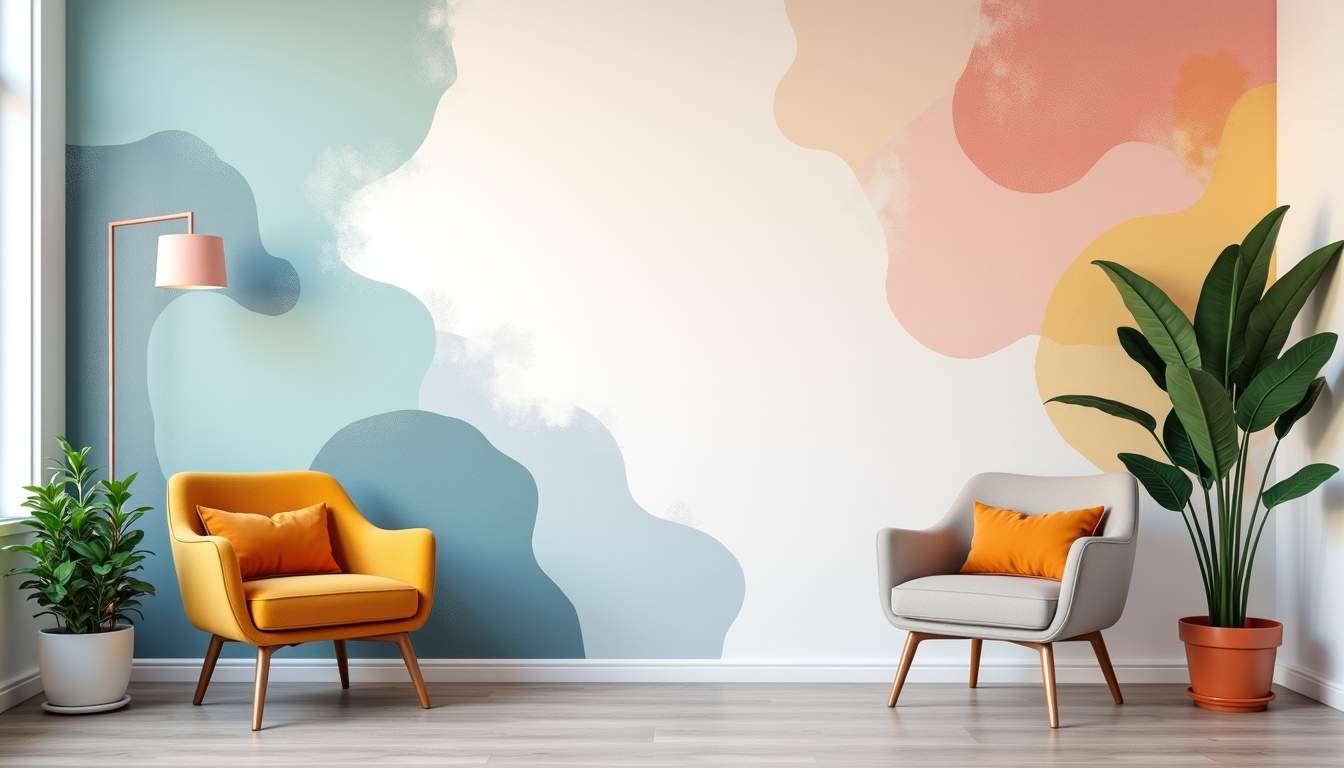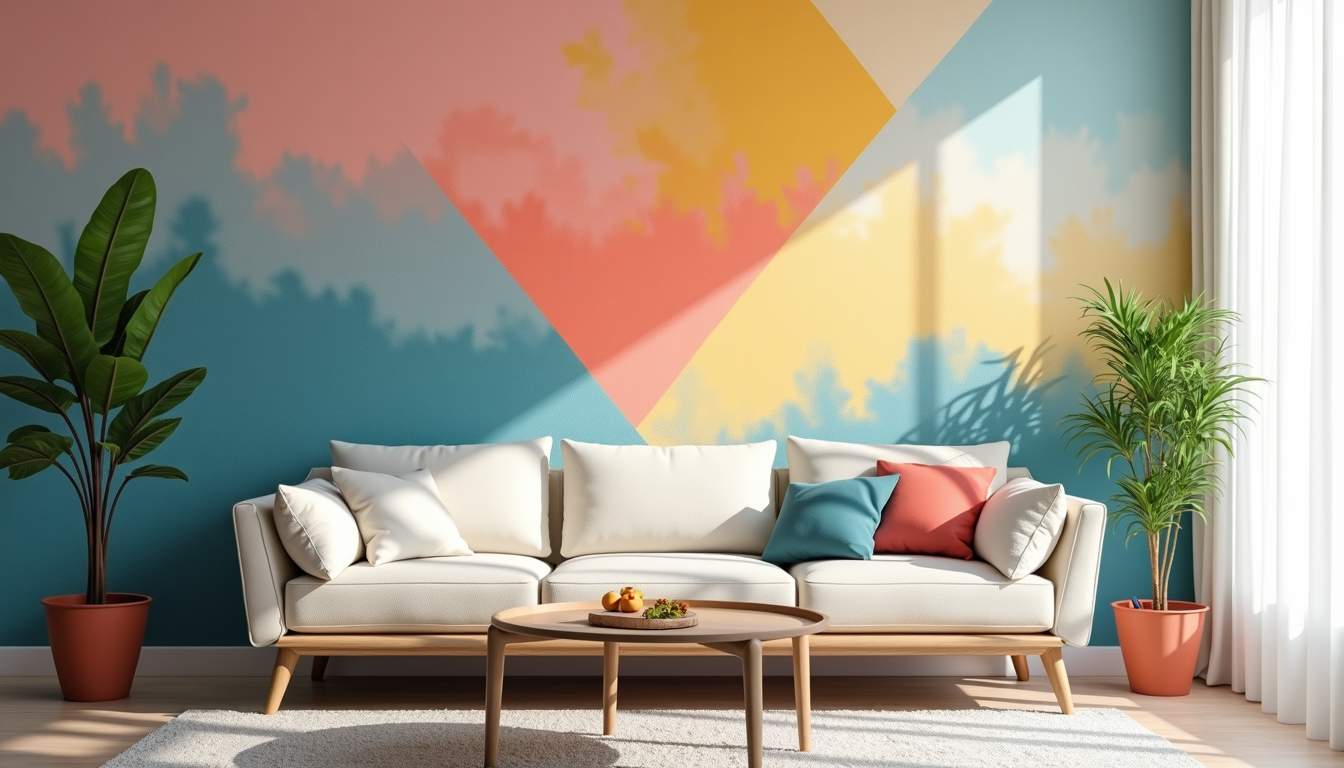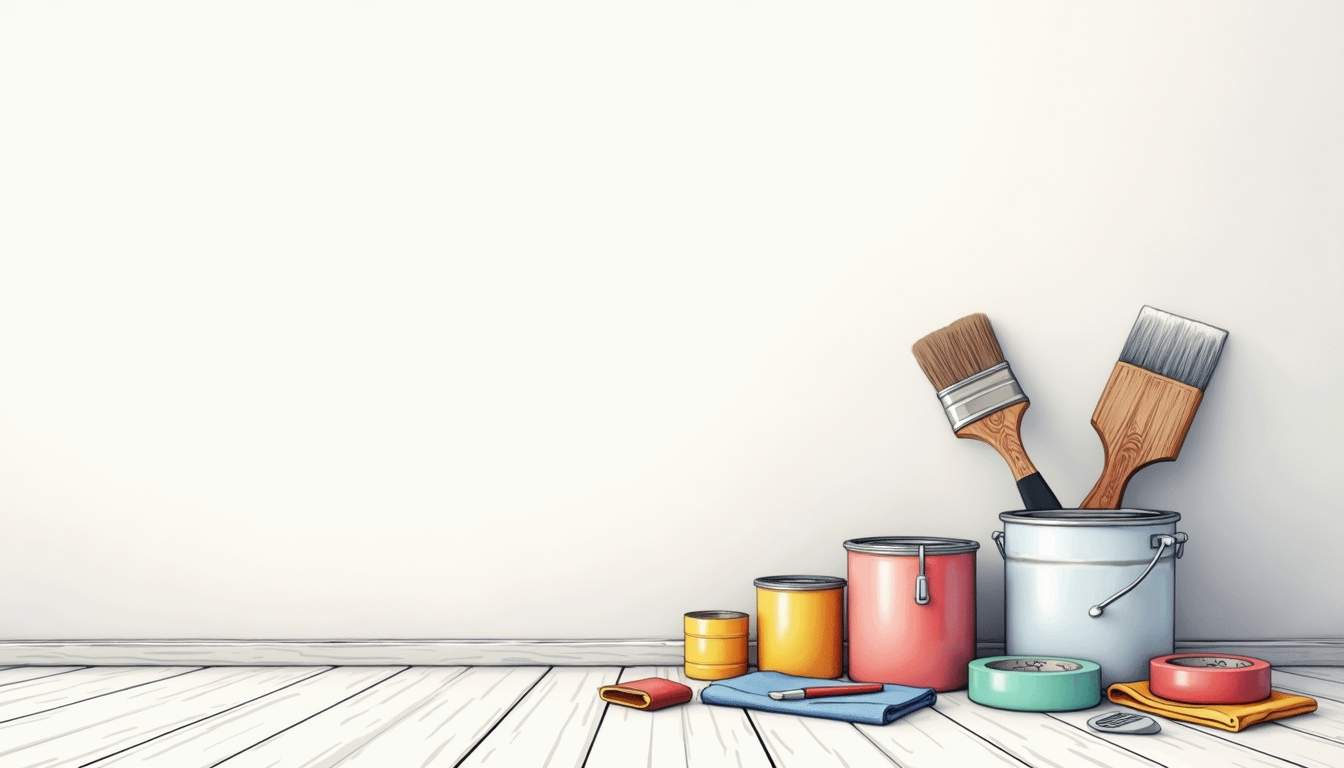
Feature walls are like the spotlight of a room. They draw the eye, set the mood, and can completely transform a space without the need for a full makeover. Choosing the right paint, design, and finish for your feature wall can feel overwhelming, but it doesn’t have to be complicated. This guide breaks down everything you need to know to create a stunning wall that stands out for all the right reasons.
Choosing the Perfect Wall for Your Feature
Not every wall is created equal when it comes to being a feature wall. The best candidates are usually the ones that naturally catch attention. Think about the wall you see first when you enter the room or the one behind a key piece of furniture like a sofa or bed. These walls serve as the backdrop for your design choices and can set the tone for the entire space. Consider the overall layout of the room and how the feature wall interacts with other elements, such as lighting and decor. A well-chosen wall can enhance the visual flow and create a harmonious environment.
Walls with architectural details, like built-in shelves or a fireplace, also make great feature walls. They offer a natural frame for your paint design and add depth. The texture and character of these architectural elements can complement your color choices, making the feature wall even more striking. Avoid walls that have doors or windows cutting through them too much, as this can disrupt the flow of your design. Instead, look for walls that provide a blank canvas, allowing your creativity to shine without interruptions.
Consider the Room’s Function
The purpose of the room should influence your feature wall choice. In a living room, a bold, dramatic wall behind the TV or sofa can anchor the space. This is an opportunity to showcase your personality through color, wallpaper, or artwork, making it a focal point for gatherings and relaxation. For a bedroom, the wall behind the headboard is a classic spot, creating a cozy and intimate vibe. Soft hues or textured wallpaper can enhance the serenity of the space, promoting a restful atmosphere conducive to sleep. In dining rooms, a feature wall can add warmth and invite conversation, perhaps through the use of rich colors or even a gallery of family photos that spark memories and stories during meals.
Think about how much time you spend in the room and what kind of atmosphere you want to create. A calming blue or green might work well in a bedroom, while a vibrant red or mustard yellow could energize a dining area. Additionally, consider incorporating various materials and finishes to add layers to your feature wall. For instance, a wood paneling accent can bring warmth and texture, while metallic elements can introduce a touch of glamour. Lighting plays a crucial role too; strategically placed sconces or LED strips can highlight your feature wall, making it stand out even more and enhancing the overall ambiance of the room. If you’re looking for professional help, you can check out Painting Service Singapore through the following link for quality painting solutions: https://www.paintingservicesingapore.sg/
Picking the Right Paint Colors and Patterns
Color sets the tone. It can make a room feel larger, cozier, brighter, or more sophisticated. When selecting colors for your feature wall, consider the existing palette of your room. You can choose a color that complements the other walls or go for a striking contrast. For instance, if your room features a lot of natural light, a darker shade can create a stunning visual depth, while lighter shades can reflect light and enhance the overall brightness of the space.

Bold vs. Subtle
If you want your feature wall to be the star, bold colors like deep navy, emerald green, or rich burgundy are excellent choices. They create a strong focal point and add personality. However, if you prefer something understated, soft pastels or muted earth tones can also work beautifully, offering a gentle contrast without overwhelming the space. Additionally, consider the finish of the paint; a matte finish can evoke a cozy, intimate atmosphere, while a glossy finish can add a touch of modern elegance and reflectivity, enhancing the overall light in the room.
Patterns and textures add another layer of interest. Stripes, geometric shapes, or even hand-painted murals can turn your wall into a piece of art. Stencils and wallpaper alternatives are great for those who want pattern without the permanence of paint. Textured paints, such as those that mimic stucco or linen, can also provide a tactile element that invites touch and interaction, making the wall not just visually appealing but also engaging.
Using Color Psychology
Colors influence mood and energy. Blues and greens tend to be calming, making them ideal for bedrooms or bathrooms. Warm colors like reds, oranges, and yellows stimulate and invite social interaction, perfect for living rooms and dining areas. Neutrals, including grays and beiges, provide a sophisticated backdrop that lets furniture and decor shine. It’s also worth noting that the saturation of a color can affect its psychological impact; a vibrant red can evoke excitement, while a softer, muted red can create a sense of warmth and comfort.
When planning your color scheme, think about how different colors can work together to create a cohesive look. Using a color wheel can be a helpful tool in identifying complementary or analogous colors that enhance each other. Additionally, consider how the colors will change with the light throughout the day; natural light can make colors appear different at various times, so testing paint samples on your walls before committing can lead to a more satisfying outcome. Don’t hesitate to mix and match colors and patterns, as this can lead to a unique and personalized space that reflects your individual style and preferences.
Techniques and Finishes That Elevate Your Feature Wall
How you apply paint can be just as important as the color you choose. Different finishes and techniques can add depth, texture, and character to your feature wall.

Matte, Satin, or Glossy? Understanding Paint Finishes
Matte finishes absorb light and hide imperfections, giving walls a smooth, velvety look. They’re great if your wall has flaws or if you want a subtle, modern feel. Satin finishes have a slight sheen, making them easier to clean and perfect for high-traffic areas. Glossy finishes reflect the most light and offer a dramatic, polished look but can highlight surface imperfections.
Specialty Finishes for Unique Textures
Consider finishes like metallic paints, which add shimmer and catch the light beautifully. Venetian plaster offers a luxurious, marble-like texture that’s both tactile and visually interesting. Chalkboard paint is a fun, interactive option, especially in kitchens or kids’ rooms, allowing you to write or draw directly on the wall.
Techniques to Try
Sponging, rag rolling, and color washing are all painting techniques that create subtle texture and depth. They’re perfect for adding interest without overwhelming the space. Tape off sections for stripes or geometric shapes if you want a graphic look. For the adventurous, a mural or freehand painting can turn your wall into a one-of-a-kind masterpiece.
Prep Work and Painting Tips for a Flawless Feature Wall
Preparation is key. A well-prepped wall ensures your paint looks great and lasts longer.

Surface Preparation
Start by cleaning the wall thoroughly to remove dust, grease, or dirt. Fill any holes or cracks with spackle and sand smooth once dry. If you’re painting over a dark color or a glossy finish, consider priming the wall first to help your new paint adhere better and show its true color.
Tools of the Trade
Good brushes and rollers make a big difference. Use a high-quality roller with the right nap length for your wall’s texture. For edges and corners, a small angled brush provides precision. Painter’s tape helps create clean lines, especially if you’re working with multiple colors or patterns.
Painting Tips
Apply paint in thin, even coats. It’s better to do two or three light coats than one heavy one to avoid drips and uneven coverage. Let each coat dry fully before applying the next. If you’re working with multiple colors, wait until the first color is completely dry before taping and painting the next to prevent smudging.
Inspiration: Ideas for Feature Walls in Different Rooms
Living Room
Go bold behind the sofa with a deep charcoal or navy blue. Add metallic accents or a geometric stencil pattern for a modern twist. Alternatively, a warm terracotta or burnt orange can make the space feel inviting and cozy.
Bedroom
Soft, muted tones like dusty rose, sage green, or pale lavender create a restful atmosphere. A subtle ombre effect, fading from dark at the bottom to light at the top, adds a dreamy quality. Consider a textured finish like Venetian plaster for an elegant touch.
Kitchen and Dining
Bright, cheerful colors like mustard yellow or teal energize these spaces. Chalkboard paint on one section lets you jot down grocery lists or menus. A tile-effect stencil pattern can mimic the look of a backsplash without the hassle of tiling.
Home Office
Choose colors that boost focus and creativity, such as soft blues or greens. A mural or inspirational quote painted directly on the wall can keep motivation high. Matte finishes reduce glare on screens, making them practical as well as stylish.
Maintaining Your Feature Wall
Once your feature wall is complete, keeping it looking fresh is easier than you might think. Dust regularly with a soft cloth to prevent buildup. For stains or marks, use a gentle cleaner suited to your paint finish. Satin and gloss finishes are more durable and easier to clean, which is worth considering if your wall is in a busy area.
Touch up chips or scratches promptly to maintain a flawless look. Keep furniture and decor a few inches away from the wall to avoid scuffs. With proper care, your feature wall will stay a standout element of your home for years to come.
Final Thoughts
A well-executed feature wall can redefine a room, adding personality and style without major renovations. Whether you opt for bold colors, subtle textures, or artistic patterns, the key is to plan carefully and prepare thoroughly. With the right approach, your feature wall will be a conversation starter and a source of pride.
Ready to transform your space? Pick your wall, choose your colors, and start painting. The perfect feature wall is waiting.


